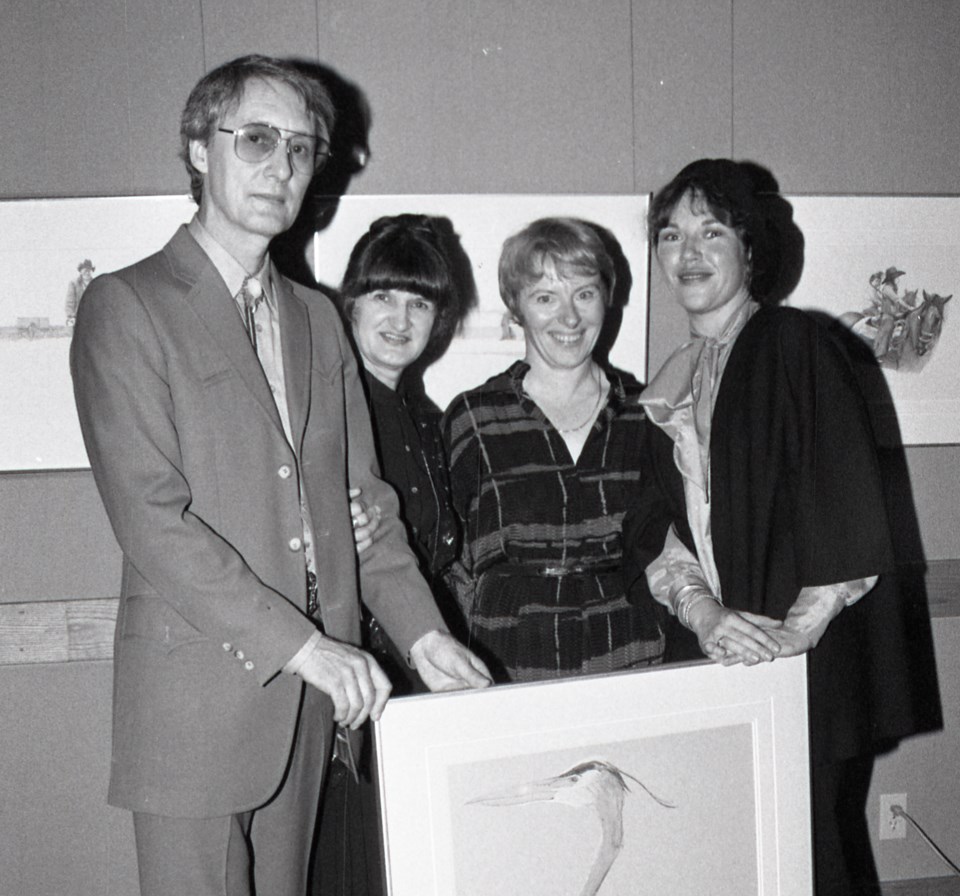The 1980s was an exciting decade for arts and culture in Whistler. In recognition of International Women’s Day on March 8, we wanted to highlight a few of the women who sparked the local arts scene in the resort’s early days.
Whistler was in its first stages of development in the ’80s, dominated by sports and a lively bar scene. There were some theatre groups, dances, and musicians, and events such as the Alta Lake Community Club’s Fall Fair, a fundraiser featuring local goods and crafts. The Squamish Arts Council, which was established in the early ’70s, had a column in the Whistler Question advertising its offerings. And there were many artists in the area, including Isobel MacLaurin—Whistler’s first professional artist.
The community recently came together to celebrate Isobel’s life. A true ski bum, she was a strong advocate for the growth of arts in the community. Her artwork is seen across the valley through murals and trail signs. She inspired others to spark their own creativity, and was involved in almost every artistic effort that came about (Arts Whistler, Whistler Singers, The Point Artist-Run Centre, and more).
After moving to Whistler in 1979, textile artist Inge Nielsen became involved in the adult education craft workshops at Myrtle Philip School, as well as hosting her own knitting workshops at the Blackcomb Day Lodge. Nielsen also sold her own goods at the 1980 Fall Fair, and that same year, opened Whistler’s first dedicated local artisan store, Inge’s Gift and Craft Store, in the Clocktower building. It was not a regular souvenir shop; all items on display were created by artists within Whistler or around British Columbia. Nielsen continued offering worshops once her store opened, and became further involved in the arts once Whistler’s first arts council was created.
In 1981, fresh out of journalism school, Glenda Bartosh became a reporter for the Whistler Question. A year later, she bought the newspaper, in the process becoming one of the youngest publishers in Canada. That same year, Bartosh and other community members started the Whistler Community Arts Council (WCAC), now known as Arts Whistler. Their goal was to fulfil local needs for more artsy events.
WCAC’s introductory event occurred in the summer of 1982. It was an art exhibit at the Blackcomb Lodge featuring 17 local artists. According to Bartosh, they received an overwhelmingly positive response that showed the need for this type of organization.
By the end of the ’80s, the arts council established many programs still running today. Margaret Long led the first Whistler Children’s Festival. Joan Richoz and Tamsin Miller organized the first Performance Series (now Arts Whistler LIVE!). Gail Rybar organized the first Bizarre Bazaar (now the Arts Whistler Holiday Market).
At the close of the 1980s, our own Florence Petersen opened the Whistler Museum, and Anne Popma founded the Whistler Centre for Business and the Arts. This organization further grew the cultural sector in the following years.
Thanks to foundations laid in the 1980s, Whistler’s arts scene continued to grow in many ways through the 1990s, and continues to thrive today.




